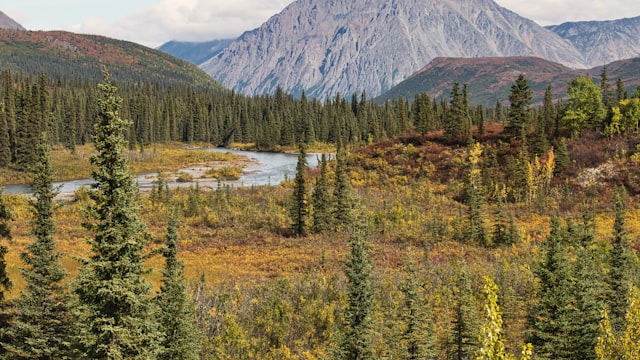Sunday, May 12, 2019
Chugach National Forest
For people that have not yet visited a locale, such as parts of Alaska, it pays dividends to go through whatever you can find from testimonies penned by community resources. The state of Alaska meets the standard of a destination in which the question of ethical tourism and hospitality makes a difference. There are many reasons why travel agencies are focused on Alaskan holiday escapes.
Sometimes the most instructive articles does not come from all encompassing technical research studies but intimate viewpoints showcasing individuals and small communities. Yet, paradoxically often it is the large organizations offering the more entertaining and instructive narratives. Not surprisingly there is also a place for travel and tourism statistical reviews or policy assessment. Content about a visit to Alaska including [original_title] support us to delve into the far reaching topics of sustainable tourism.
Alaska is a place where responsible travel and tourism is mandatory.
Among the list of proposed trips for tourists heading to Alaska includes
Chugach National Forest. Only one third as big as Tongass National Forest, in Southeast Alaska, Chugach is still the second-largest national forest in the nation and a remarkable combination of forests, rivers, lakes, mountains and glaciers. Nearly the size of New Hampshire, Chugach includes geographic variety that's truly unique amongst national forests. The 5,940,000-acre forest is spread across three different landscapes, stretching from the Kenai Peninsula east across Prince William Sound to encompass the Gulf Coast surrounding the Copper River Delta, then east from there as far as the Bering Glacier. Wildlife is definitely plentiful especially for any who make the effort to hike from the roads and highways. Black and brown bear dwell in virtually all of the forest, foraging upon open tundra slopes and in intertidal zones. In late summer season, bears have been spotted feeding on spawned-out salmon along streams and rivers. Record setting moose inhabit the Kenai Peninsula and the Copper River Delta. Dall sheep can be seen on Kenai Peninsula mountainsides, mountain goats are found upon steep hillsides along Prince William Sound, the Copper River Delta and from time to time above Portage Valley. Boaters and kayakers in Prince William Sound may see Dall porpoises, harbor seals, sea otters, sea lions, Orcas and humpback whales. In excess of 214 species of resident and migratory birds inhabit Chugach National Forest. Seabirds, such as blacklegged kittiwakes, nest in sea cliff colonies by the thousands. Ptarmigan scurry over alpine tundra, bald eagles perch on shoreline snags and Steller's jays forage in the underbrush. The Copper River Delta protects one of the largest concentrations of nesting trumpeter swans in North America as well as the total population of dusky Canada geese. Nesting waterfowl are joined in spring and autumn by thousands of migrating shorebirds. Chugach provides a variety of angling possibilities; fishermen may cast for rainbow, lake and cutthroat trout and also Dolly Varden, Arctic grayling and all five species of Pacific salmon. Many of the fisheries are simple to get to; roadside lakes and rivers abound providing anglers a chance to fish without needing a boat. Chugach's most famous fishery is the red salmon run of the Russian River in which anglers are often standing elbow-to-elbow along the river bank in July and July. Chugach is one of the few spots left in the world where glaciers pour out of the mountains and into the seas. When combined with the Bagley Icefield from which it originates, Bering Glacier is bigger than Switzerland. Columbia Glacier is one of the biggest tidewater glaciers in the world while Portage Glacier and it's Begich-Boggs Visitor Center is one of the most widely used stops for vacationers in Alaska.
Subscribe to:
Post Comments (Atom)

No comments:
Post a Comment